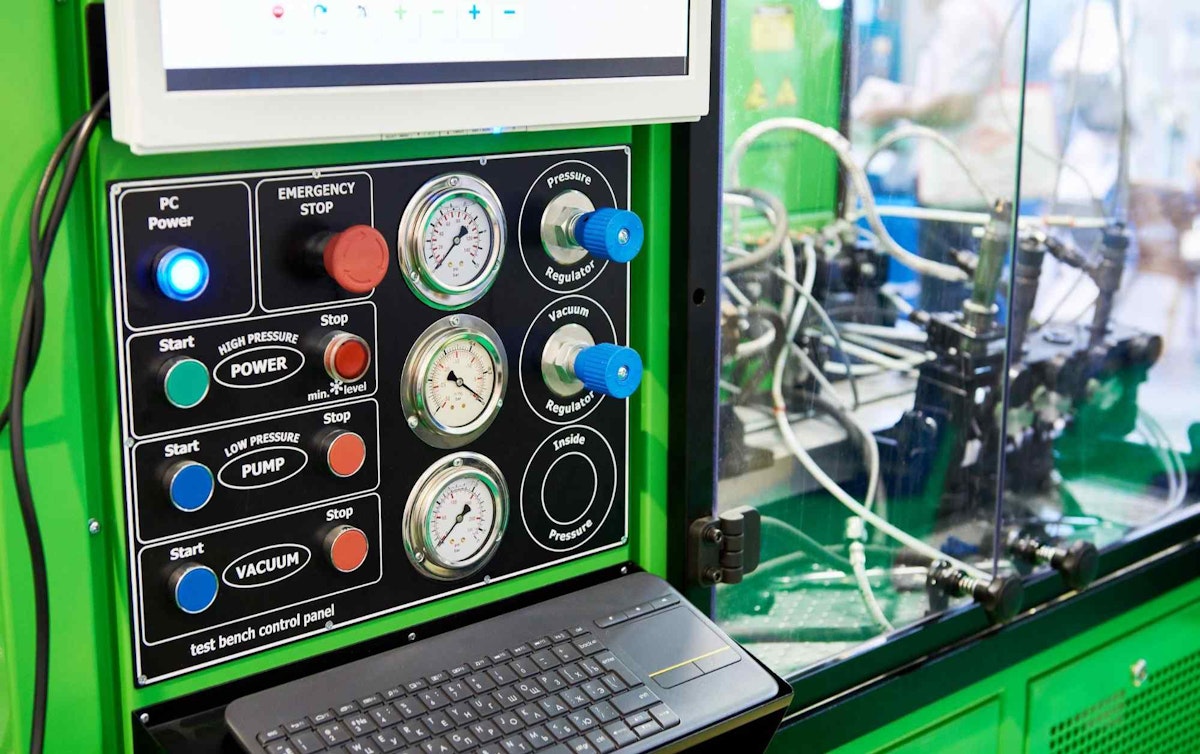Table of contents
Browse categories
Browse authors
 AB
ABAlberto Boffi
 AL
ALAlessia Longo
 AH
AHAl Hoge
 AB
ABAljaž Blažun
 BJ
BJBernard Jerman
 BČ
BČBojan Čontala
 CF
CFCarsten Frederiksen
 CS
CSCarsten Stjernfelt
 DC
DCDaniel Colmenares
 DF
DFDino Florjančič
 EB
EBEmanuele Burgognoni
 EK
EKEva Kalšek
 FB
FBFranck Beranger
 GR
GRGabriele Ribichini
Glacier Chen
 GS
GSGrant Maloy Smith
 HB
HBHelmut Behmüller
 IB
IBIza Burnik
 JO
JOJaka Ogorevc
 JR
JRJake Rosenthal
 JS
JSJernej Sirk
 JM
JMJohn Miller
 KM
KMKarla Yera Morales
 KD
KDKayla Day
 KS
KSKonrad Schweiger
Leslie Wang
 LS
LSLoïc Siret
 LJ
LJLuka Jerman
 MB
MBMarco Behmer
 MR
MRMarco Ribichini
 ML
MLMatic Lebar
 MS
MSMatjaž Strniša
 ME
MEMatthew Engquist
 ME
MEMichael Elmerick
 NP
NPNicolas Phan
 OM
OMOwen Maginity
 PF
PFPatrick Fu
 PR
PRPrimož Rome
 RM
RMRok Mesar
 RS
RSRupert Schwarz
 SA
SASamuele Ardizio
 SK
SKSimon Kodrič
 SG
SGSøren Linnet Gjelstrup
 TH
THThorsten Hartleb
 TV
TVTirin Varghese
 UK
UKUrban Kuhar
Valentino Pagliara
 VS
VSVid Selič
 WK
WKWill Kooiker
How to Measure Pressure?

January 14, 2025
Pressure measurement is fundamental in various industries and scientific research. It is crucial in monitoring and controlling aerospace, automotive, healthcare, environmental monitoring, and manufacturing processes. Understanding the principles, sensors, and technologies behind pressure measurement is essential for selecting the appropriate method for specific applications. In this article, you will:
Understand what pressure is and how important it is to measure
See how to measure pressure
Find out about the types of pressure sensors and technologies used today
Learn the differences among gauges, sensors, transducers, and transmitters

What is pressure?
Pressure is defined as force per unit area exerted by a fluid (liquid or gas) perpendicular to a surface.
It is defined by the formula P = F/A
Where:
P = Pressure
F = The resulting Force
A = The surface Area subjected to the force
The types of pressure measurements
There are three main types of pressure measurements:
Absolute pressure: Pressure is measured relative to a perfect vacuum (zero pressure)
Gauge pressure: Pressure is measured relative to ambient atmospheric pressure
Differential pressure: Measured as the difference between two pressures
Pressure can be positive or negative. Negative pressure refers to a condition where the pressure in a given space is lower than the pressure of the surrounding environment. Because nearly all pressure sensors operate on the principle of measuring pressure differences, they can measure both positive and negative pressure.
The units of pressure measurements
Pressure is measured in various units depending on the context and the instrument used. Here are the most common ones:
Pascal (Pa): The SI (International System of Units) unit of pressure. One Pascal is defined as one newton per square meter (N/m²). Note: One kilopascal (kPa) equals 1,000 Pascals.
Newton per square meter (N/m²): 1 N/m² equals 1 Pascal.
Bar (bar): A metric unit of pressure, where 1 bar equals 100,000 Pascals.
Atmosphere (atm): Based on the average atmospheric pressure at sea level, 1 atmosphere is equal to 101,325 Pascals.
Torr (torr): 1 torr equals 133.322 Pascals.
Pounds per square inch (psi): Commonly used in the United States, one psi is equal to the pressure resulting from a force of one pound-force applied to an area of one square inch.
Millimeter of mercury (mmHg): Commonly used in medicine and meteorology, one mmHg is equal to 133.322 Pascals.
Inches of mercury (inHg): Commonly used in aviation and meteorology in the United States, one inch of mercury is equal to 3,386 Pascals.
Each unit can be used depending on the application and the preferred measurement system in a given field.
Transducers vs. transmitters
The term “pressure sensor” can refer to both transducers and transmitters. Transducers are sensors that typically have a voltage output, whereas transmitters output via a standard 4-20mA current loop. 2-wire and 4-wire current loops are widely used in industrial and process control applications across multiple industries.
Pressure sensor and gauge types
Pressure measurement technology is broad due to the wide variety of sensor types available. Accordingly, pressure measurement techniques vary according to the type of sensor employed. Sensors and transducers have electrical outputs that can be connected to measuring systems, whereas gauges are typically mechanical devices that have a physical dial or other visual indicator as their outputs. Let’s examine each of the major pressure sensor and gauge types and compare their strengths, weaknesses, and most suitable applications:
Piezoresistive (strain gage) pressure sensors
Capacitive pressure sensors
Piezoelectric (charge) pressure sensors
MEMS pressure sensors
Resonant Wire pressure sensors
Optical pressure sensors
Thermal conductivity pressure sensors
Bourdon tube pressure gauges
Manometer pressure gauges
Diaphragm pressure gauges
Ionization pressure gauges
Piezoresistive strain gauge pressure sensors
Strain gauge pressure sensors measure the deformation of a diaphragm or a structure to which strain gauges are attached. Pressure-induced strain changes the gauges' electrical resistance, which is then measured and correlated to pressure using a Wheatstone bridge circuit.
These sensors are commonly used in industrial applications, automotive systems, and load cells due to their good accuracy, linearity, and wide pressure range. They do, however, require temperature compensation and can experience drift over time unless the corresponding signal conditioners have compensation circuits, like Dewesoft STG series signal conditioners.
Strain gage pressure sensor applications:
Strain gauges are used in virtually all industries, including automotive, aerospace, healthcare, structural monitoring, modal tests, and more. They are also used within load cells.
Strain gage pressure sensor advantages:
Good accuracy and linearity
Wide pressure range
Strain gage pressure sensor disadvantages:
Require temperature compensation
Potential for drift over time
Capacitive pressure sensors
These sensors measure pressure by detecting changes in capacitance between two plates, one of which is fixed while the other is a diaphragm that moves under pressure. An electrical circuit measures and converts this change in capacitance into pressure readings.
These sensors are highly sensitive and precise, making them suitable for applications like medical devices and laboratory equipment. However, they can be sensitive to temperature and electromagnetic interference and require careful calibration to ensure accurate measurements.
Capacitive pressure sensor applications:
Capacitive pressure sensors are used in applications requiring high sensitivity and precision, including medical devices and laboratory equipment. They are found in control and monitoring applications including altitude, flow, airspeed, and level.
Capacitive pressure sensor advantages:
High sensitivity and accuracy
Capable of measuring very low pressures
Capacitive pressure sensor disadvantages:
Sensitive to temperature and electromagnetic interference
Requires calibration for accurate measurements
Piezoelectric (charge) pressure sensors
These sensors leverage the piezoelectric effect, where materials like quartz, ceramics, lead zirconate titanate (PZT), and other crystalline materials generate an electric charge in response to mechanical stresses, including pressure. They produce an electrical charge that can be measured and converted into a proportional electrical signal via electrodes. A signal conditioner converts the charge into a usable pressure value.
Piezoelectric sensors are ideal for dynamic, fast-changing pressure measurements, like internal combustion engine analysis, crash, vehicle dynamics, and other studies. However, due to their nature, they are unsuitable for most static pressure measurements.
Piezoelectric pressure sensor applications:
These sensors are ideal for dynamic (high bandwidth) pressure measurements, such as in engine combustion analysis and shockwave studies.
Piezoelectric pressure sensor advantages:
High bandwidth (frequency response)
Robust operation and self-powered
Suitable for dynamic and transient pressure measurements
Piezoelectric pressure sensor disadvantages:
Not suitable for static pressure measurements
Requires careful handling to avoid material fatigue
Temperature sensitivity
MEMS pressure sensors
MEMS (Micro-Electro-Mechanical Systems) pressure sensors integrate mechanical elements, sensors, and electronics on a silicon chip to measure pressure. These sensors typically feature a micromachined diaphragm that deforms under pressure, with piezoresistive elements or capacitive plates measuring the diaphragm’s deformation. The integrated circuitry then processes the signal.
MEMS sensors are widely used in consumer electronics, automotive systems, and medical devices due to their small size, low power consumption, high accuracy, and reliability.
MEMS pressure sensor applications:
Widely used in consumer electronics, automotive systems, and medical devices.
MEMS pressure sensor advantages:
Small size and low power consumption
Ideal when pressure sensor accuracy is important
Low cost
MEMS capacitive sensors are good for static pressure measurements
MEMS piezoresistive sensors are suitable for dynamic pressure measurements
MEMS pressure sensor disadvantages:
Limited to lower pressure ranges
Sensitive to temperature changes
Resonant wire pressure sensors
These sensors measure pressure-induced changes in the resonant frequency of a wire (or diaphragm). Pressure changes the tension in the wire, which in turn alters its resonant frequency.
Consisting of a resonant wire or diaphragm and an electromagnetic driver and sensor, resonant wire sensors are known for their high precision and stability, making them ideal for applications like altimetry and meteorology.
Resonant wire pressure sensor applications:
Used in applications requiring high precision and stability, such as altimetry and meteorology.
Resonant wire pressure sensor advantages:
High accuracy and stability
Low hysteresis
Resonant wire pressure sensor disadvantages:
Complex and expensive
Sensitive to temperature changes
Optical pressure sensors
Optical pressure sensors measure pressure-induced changes in the optical properties of a material or the deflection of a diaphragm using optical fibers and interferometry. The optical fiber transmits light and an interferometer or photodetector detects changes in light properties.
These sensors operate in harsh environments, such as oil and gas exploration, and biomedical applications. They are immune to electromagnetic interference and can operate in explosive environments, but their high cost and the need for specialized equipment for signal processing are notable disadvantages.
Optical pressure sensor applications:
Suitable for harsh environments, such as oil and gas exploration, and biomedical applications.
Optical pressure sensor advantages:
Immune to electromagnetic interference
Suitable for harsh and explosive environments
Optical pressure sensor disadvantages:
Relatively high cost
Requires specialized equipment for signal processing
Thermal conductivity pressure sensors
Also known as Pirani gauges, thermal conductivity pressure sensors operate on the principle that a gas's thermal conductivity varies with its pressure. A resistive heating element (often a filament) heats the gas within the sensor, and temperature sensors are placed near the heating element to measure the gas's temperature.
At lower pressures, the gas molecules are fewer, so they dissipate less heat, resulting in higher temperatures near the heating element. At higher pressures, more gas molecules are present to conduct the heat away, leading to lower temperatures near the heating element. The temperature difference measured by the sensors is used to calculate the thermal conductivity of the gas. Since thermal conductivity is a known function of pressure for a given gas, the sensor can then determine the pressure from this relationship.
Thermal conductivity sensor applications: Used in vacuum systems and low-pressure environments, such as semiconductor manufacturing.
Thermal conductivity sensor advantages:
Simple and robust
Suitable for low-pressure measurements
Thermal conductivity sensor disadvantages:
Limited to certain pressure ranges
Affected by the type of gas being measured
Bourdon tube pressure gauge
The Bourdon Tube pressure gauge is one of the earliest and most commonly used methods for measuring pressure. It is a mechanical sensor that operates on the principle of deformation. A curved tube tends to straighten out when pressurized, and this deformation is proportional to the applied pressure. The primary sensing element is a C-shaped tube, usually made of metal, which is connected to a linkage mechanism that translates the tube’s deformation into a readable dial movement.
Bourdon tube applications:
Bourdon Tubes are widely used in industrial applications for measuring medium to high pressures in hydraulic and pneumatic systems.
Bourdon tube advantages:
Simple and robust design
Totally mechanical - no power supply is needed
Cost-effective
Bourdon tube disadvantages:
Limited accuracy compared to electronic sensors
Susceptible to mechanical wear over time
Manometer pressure gauges
Whereas Bourdon gauges measure pressure using mechanical deformation, manometers use fluid displacement. They balance a fluid column against the pressure to be measured, where the height of the fluid column is proportional to the pressure. They are available in several mechanical configurations, including U-tube manometers, inclined manometers, and digital manometers.
Manometer applications:
Manometers are found in specialized applications like laboratory experiments or low-pressure measurements.
Manometer advantages:
Can measure very low pressures with high accuracy
Simple construction, and can be used for differential pressure measurements.
No power supply is needed
Relatively low cost
Manometer disadvantages:
Cannot measure pressure as high as Bourdon tubes
Susceptible to mechanical wear over time
Diaphragm pressure gauges
Diaphragm pressure sensors are a good solution for low to medium-pressure measurements, particularly when corrosive liquids, gases, or high-viscosity liquids are present. Their ports are mechanically isolated from each other, so they can be used for both gases and liquids. They use a flexible diaphragm that deforms in response to pressure changes. The deformation is translated into a dial reading via a mechanical linkage, to an electrical outlet via a transducer, or sometimes both. For higher bandwidth applications, some diaphragm pressure sensors use a piezoelectric sensor to make the measurement.
Diaphragm pressure gauge applications:
Diaphragm pressure gauges are suitable for low to medium-pressure measurements, particularly in environments where viscous liquids or corrosive gas or liquid is present, making Bourdon tubes and other pressure sensors impractical.
Diaphragm pressure gauge advantages:
High sensitivity and accuracy
Capable of measuring low pressures
Diaphragm pressure gauge disadvantages:
Limited to certain pressure ranges
Potential for material fatigue over time
Ionization pressure gauges
These sensors measure pressure based on the ionization of gas molecules. An electric field ionizes the gas, and the resulting ions are collected via electrodes to generate a current proportional to the pressure. The ion current is then converted into a pressure reading. Due to their extreme sensitivity, these gauges are primarily used in ultra-high vacuum applications, such as scientific research and space simulation chambers.
Ionization gauge applications:
These sensors are used primarily in ultra-high vacuum applications in scientific research and space simulation chambers.
Ionization gauge advantages:
Extremely sensitive
Suitable for ultra-high vacuum measurements
Ionization gauge disadvantages:
Complex and expensive
Requires a high vacuum to operate accurately
Key pressure sensor applications
Pressure transducers and sensors are vital in many industries and applications due to their ability to measure and monitor pressure accurately. Here are some key pressure sensor applications:
Automotive industry
Automotive pressure sensors are used in a variety of applications, including:
Intake manifold pressure, fuel pressure, oil pressure
Tire Pressure Monitoring Systems (TPMS)
Brake Systems, hydraulic pressure levels
Transmission and gear systems, hydraulic pressure
Healthcare and medical devices
Medical pressure sensors are used in a variety of applications, including:
Blood Pressure Monitoring
Ventilator and CPAP air pressure
Infusion pump pressure
Industrial automation
Industrial pressure measurement is widely performed in these and other applications:
Hydraulic and pneumatic systems
Gas and liquid pressure in pipelines, reactors, and storage tanks
Pipeline leak detection
Aerospace and defense
Altitude, barometric pressure, atmospheric pressure
Cabin pressure
Fuel pressure monitoring
Consumer electronics
Smartphones and wearable altitude and barometric pressure, fitness, and location services
Water pressure measurement in home appliances like washing machines and dishwashers
Environmental monitoring
Weather Stations: Barometric pressure sensors measure atmospheric pressure in weather stations, aiding in weather prediction and climate studies.
Water Quality Monitoring: Pressure sensors monitor the pressure in water systems to ensure a clean and safe water supply.
Oil and gas industry
Drilling system safety-based pressure measurements
Pipeline pressure measurements to detect leaks and blockages
Food and beverage industry
Packaging pressure measurements to ensure proper sealing and prevent food contamination
Pressure feedback control in various food processing equipment
Marine industry
Ballast tank pressure monitoring for optimal ship buoyancy
Combustion engine oil and fuel pressure monitoring
HVAC systems
Refrigerant pressure monitoring
Air pressure monitoring and control for air quality and comfort
Conclusion
Pressure measurement is critical to various industrial and scientific applications, necessitating a range of sensors and technologies to meet diverse requirements. It plays a crucial role in monitoring and controlling processes in fields like aerospace, automotive, healthcare, environmental monitoring, and manufacturing.
Each method, from the robust Bourdon tube to the highly sensitive MEMS digital pressure sensors, offers unique advantages and limitations. Selecting the appropriate pressure measurement method depends on factors such as the pressure range, environment, accuracy requirements, and application-specific constraints. Advances in sensor technology continue to enhance the capabilities and applications of pressure measurement, paving the way for more precise, reliable, and versatile solutions in the future.